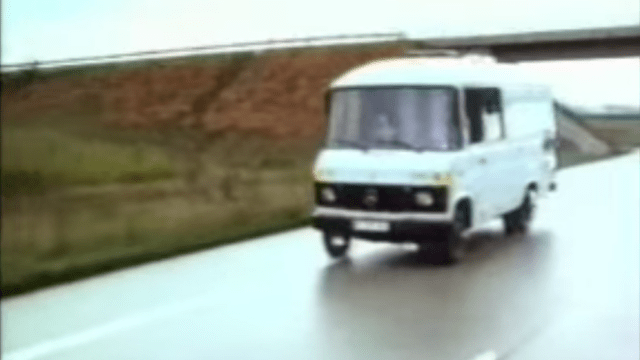Ernst Dickmann’s autonomous Mercedes van in the 1980sScreenshot: Computer History Museum (YouTube)
Besides a few of the minor, current examples of driverless cars cruising around cities like Phoenix, we’re still decades away, if ever, from a full-fledged takeover of autonomous vehicles on public streets. The achievements that have been made to date, however, can be attributed to pioneering engineers like Ernst Dickmanns, whose effort to outfit vehicles with autonomous technology back in the 1980s is profiled in this fascinating Politico story from last week.
It’s always complicated to consider who was the first to do anything, but Dickmanns role in developing self-driving cars can’t be overstated. Considered by some to be the man “who actually invested self-driving cars,” Politico produced a deep-dive on the engineer’s role, and it’s absolutely fantastic.
Here’s one snip:
By this point, he had already started mulling what would soon become his life mission: teaching vehicles how to see. The place to start, Dickmanns became increasingly convinced, was not spaceships but cars. Within a few years, he had bought a Mercedes van, installed it with computers, cameras and sensors, and began running tests on the university premises in 1986.
“The colleagues at the university said, well, he’s an oddball, but he’s got a track record [of achievements in aerospace technology,] so let’s just let him do it,” Dickmanns said during an interview at his family house, located steps from an onion-domed church in Hofolding, a small town outside of Munich.
In 1986, Dickmanns’ van became the first vehicle to drive autonomously — on the skidpan at his university. The next year, he sent it down an empty section of a yet-to-be-opened Bavarian autobahn at speeds approaching 90 kilometers per hour. Soon afterward, Dickmanns was approached by the German carmaker Daimler. Together, they secured funding from a massive pan-European project, and in the early 1990s, the company came up with an idea that first seemed “absurd” to Dickmanns.
Then there’s this example of his test drive in the 1990s, and it bears a ton of resemblance to the type of drives automakers are conducting today:
An engineer remained in the front seat of each car — with his hands on the steering wheel in case something went wrong — but the cars were doing the driving.
“Sometimes, we would take our hands off the wheel,” said Reinhold Behringer, one of the engineers who sat in the driver’s seat during the demonstration, with excitement still in his voice 24 years later.
Newspapers ran frontpage stories about the demonstration, he remembered. And a year later, Dickmanns’ team took a re-engineered car on an even longer trip, travelling for more than 1,700 kilometers on the autobahn from Bavaria to Denmark, reaching speeds of more than 175 kilometers per hour.
Honestly take some time to read the entire story. I had such a great time with it.
